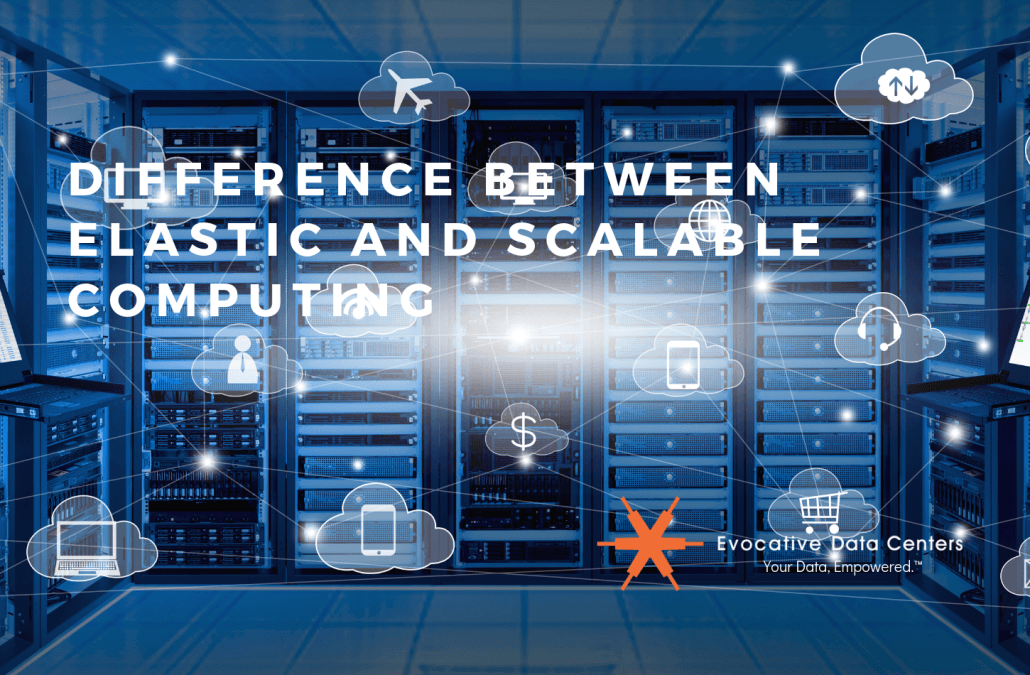There are key differences between elastic computing and scalable computing which include various capabilities of a data center’s IT infrastructure.
What is Elastic Computing?
As we mentioned, elastic computing is the capability of a data center’s IT infrastructure to increase or decrease processing power, storage, bandwidth or other services as needed.
This means that your data center provider can dynamically increase or decrease the resources they provide to you based on your requirements at any given time. The ability of a data center to earmark the exact resources to meet your specific needs on-demand helps the infrastructure work at peak efficiency and enables the data center to be a true pay-per-use facility. This is an important financial benefit as it means that you pay for only the services and capacity you use and nothing more. The best use case examples of elastic computing can be found in the retail and e-commerce markets.
Retail Business and Increased Demands
Let’s consider a retail business that specializes in pool and beach-related products and supplies and an e-commerce site that sells toys during the Christmas season. The retail business sells most of its pool and beach-related products in the spring and summer. To meet the increased demand from the months of April through September, but not have to pay for resources which will go unused from October through March, the business utilizes a data center with elastic infrastructure capabilities.
This ensures that they can handle the increased load during peak months but can also reduce that expense during the other months, only paying for what they use. Similarly, the peak season for an e-commerce website selling toys is between Thanksgiving and Christmas. This short window of 4-5 weeks can see significant day to day spikes in website traffic. Even a few minutes of downtime or network instability can cause millions of potential customers to go to a competitor and the company will incur a significant revenue loss. Infrastructure elasticity can support these rapid sales spikes, increasing and decreasing day to day without negatively effecting performance or availability.
What is Scalable Computing?
Although we often speak of the scalability of applications, scalability also includes the ability to increase workloads on hardware and software within an already existing network.
Companies who regularly onboard new customers or welcome new employees will want to anticipate their expected growth over the next 6 months or a year so that resources are acquired and allocated in advance of their use. Scalable computing is typically broken out into vertical scaling and horizontal scaling. Vertical scaling is the ability to increase the capacity of an existing piece of hardware or software by adding additional resources without any decrease in performance. You can increase the capacity up to the limit of that piece of hardware or software. Horizontal scaling is the ability to scale out to handle the load of added users. Additional servers, software, and other resources may need to be added to an existing network. To implement effectively, it is important to remember that this will require anticipation of future needs.
Scalability and Elasticity is a Powerful Combination
As you can see, elasticity and scalability are two very different things. But, when combined in a data center environment like Evocative’s which is focused on efficiency and resource optimization, they deliver one powerful solution. Our clients can quickly and easily add and remove resources as their business grows or needs change and are able to take advantage of pay-per-use pricing, so they are sure to pay for only the services they use when they use them.

